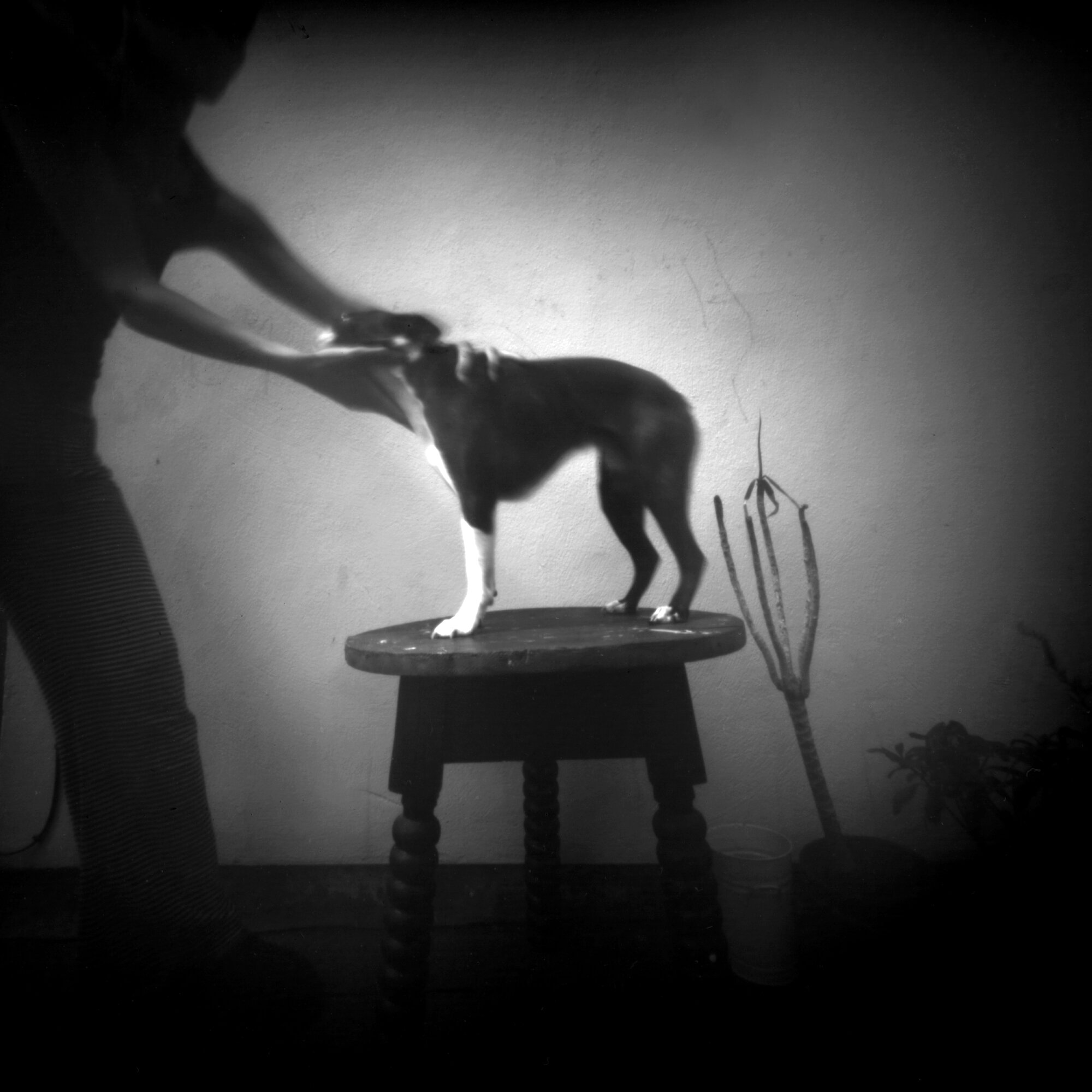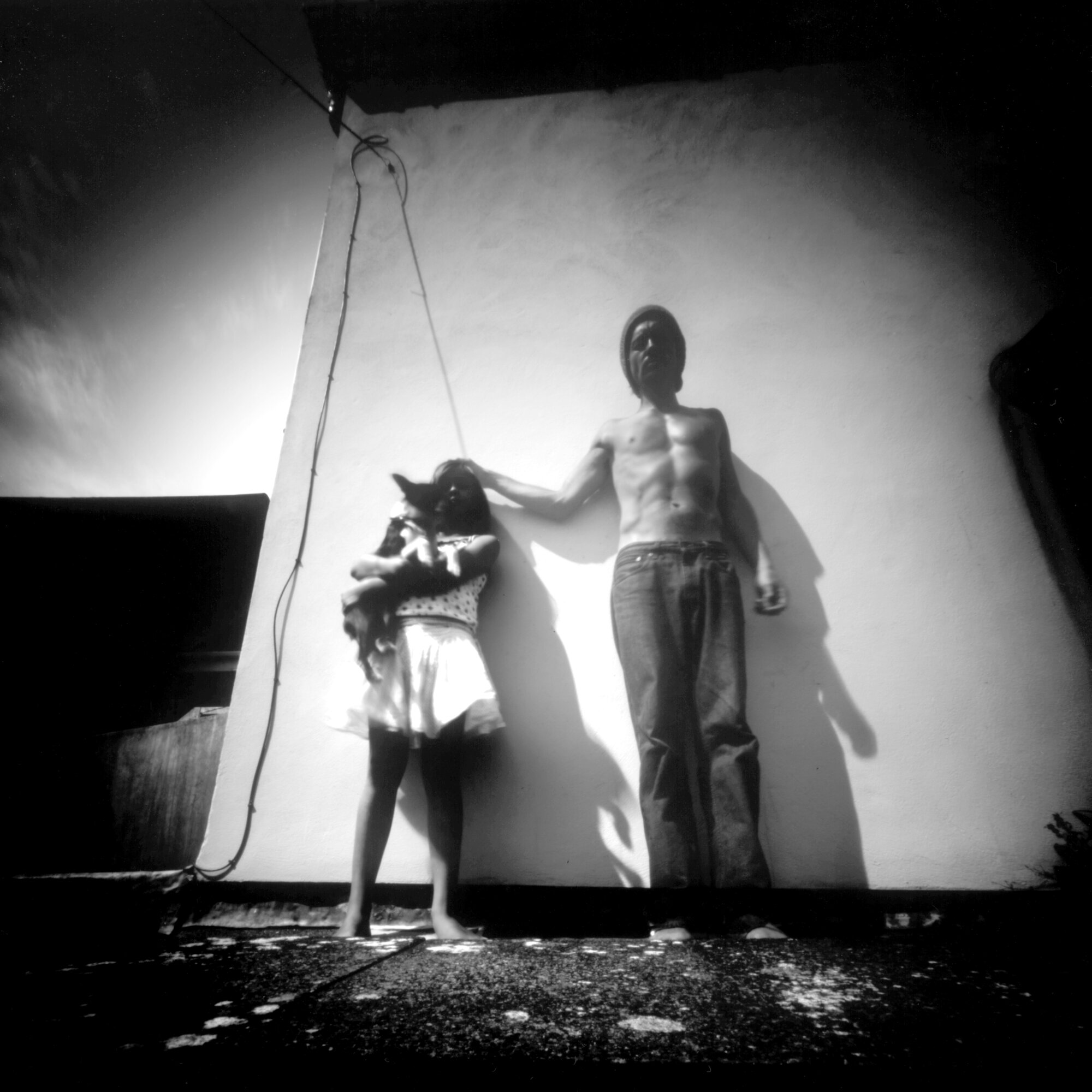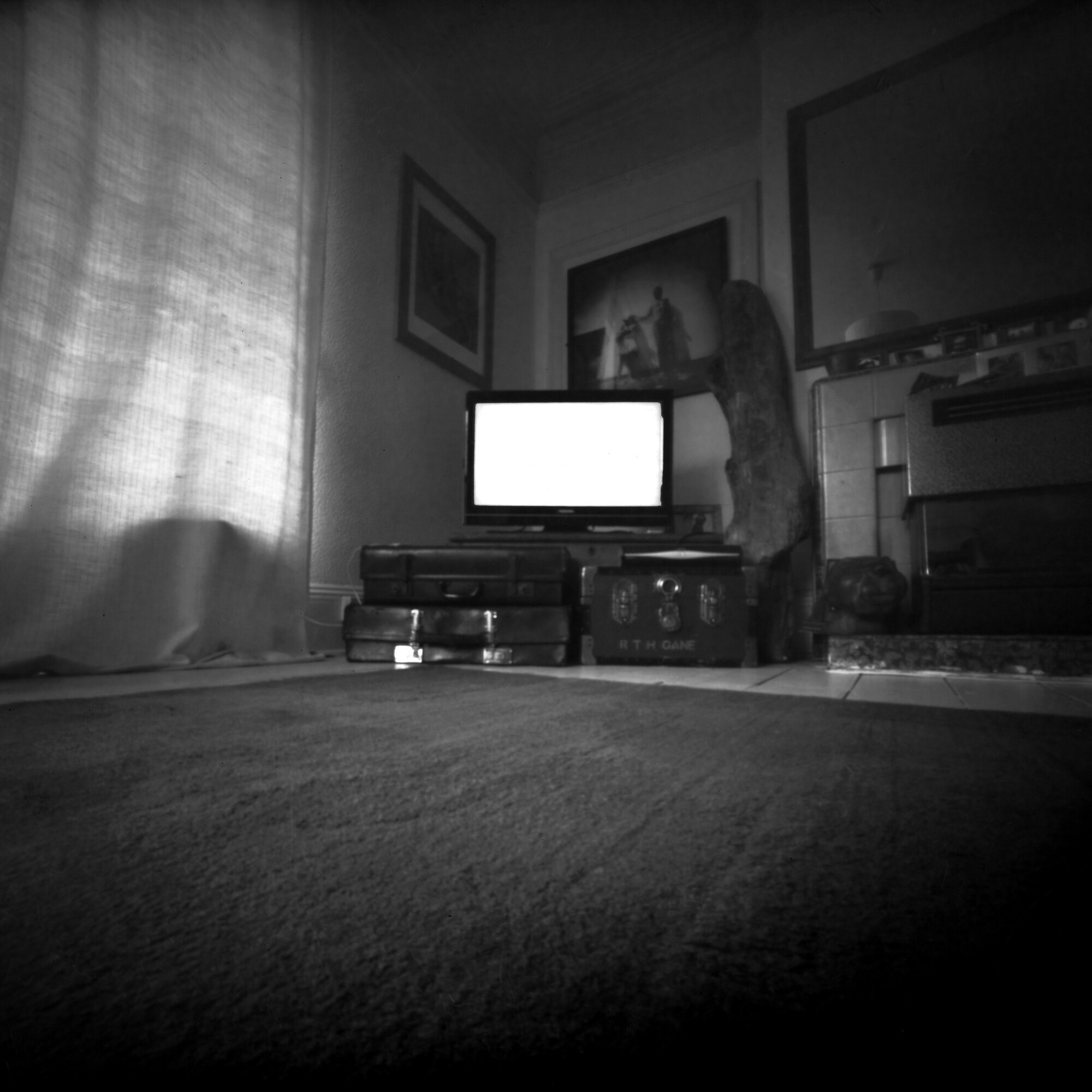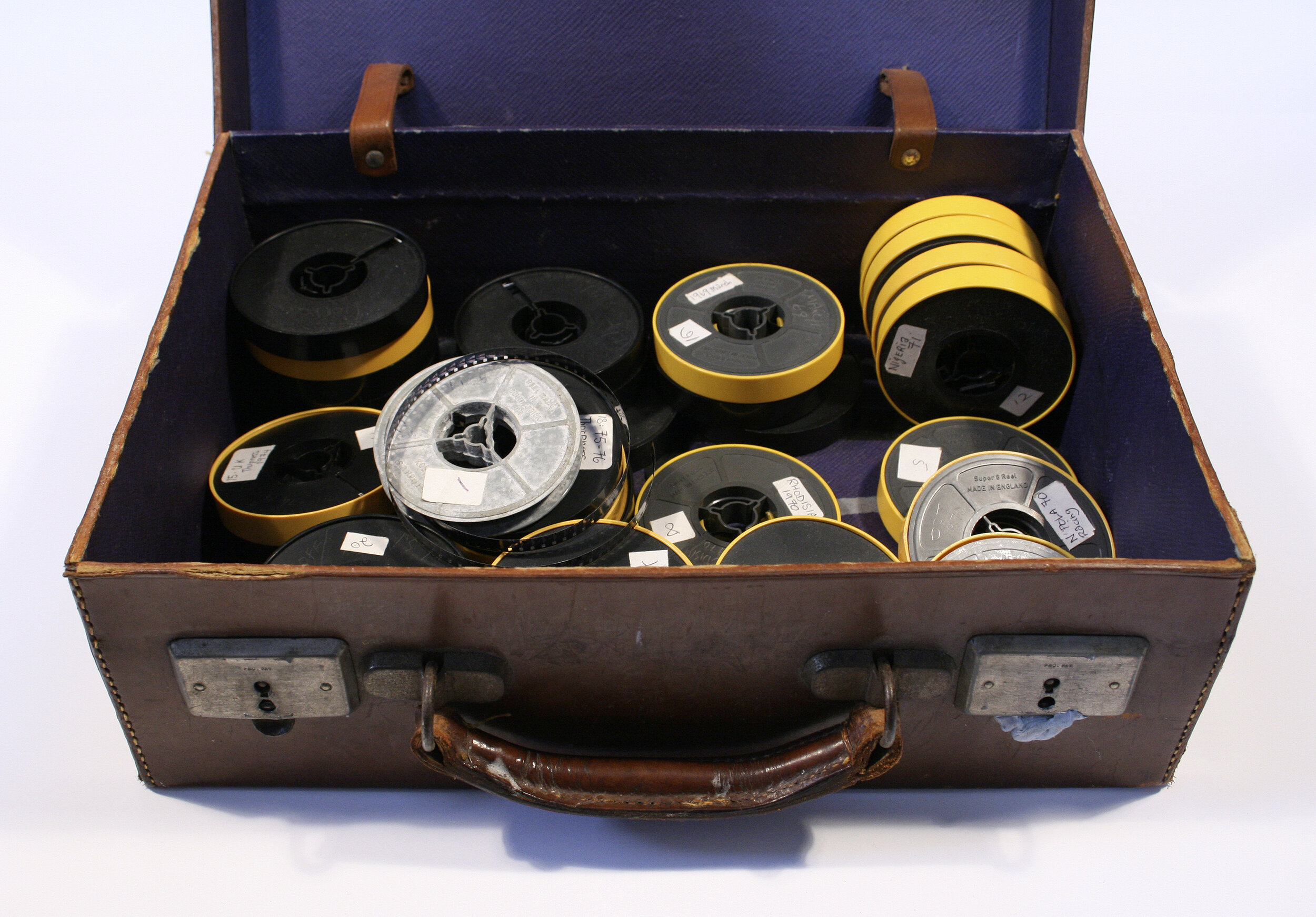200 Seconds















A leather case in which family cine films have been stored for over thirty years is converted into a camera, challenging photography’s mnemonic standing - as the harbourer of implanted memories becomes recorder.
200 Seconds refers to the exposure time of each pinhole photograph and to the duration of a 50ft spool of Kodak Super-8 played at the standard rate of 18 frames per second. Each photograph is made during the projection of a film from the archive. In stark contrast to the present digital proliferation of personal photographs and their distribution through social networking sites. Traditional black and white paper negatives are digitally scanned then printed to the same scale and dimensions as the projection screen on which the films were repeatedly viewed on family occasions.
The photographic image is both implicated in and antithetic to, memory, for unlike the mental image of a past event, it is able to imprint itself on our memories repeatedly without relinquishing any of its vividness. Family photographs and films are revisited in order to re-live an event, but with each viewing, it is the recorded images themselves that become further implanted in memory.
These mise-en-abîme images are part of an extended photographic and theoretical investigation, exposing and exploring a space between the Bergsonian notions of perception and recollection. It is intended (with reference to the still photograph’s accepted associations with death) that through a contraction of cinematic and photographic time, new life may be given to the resulting images